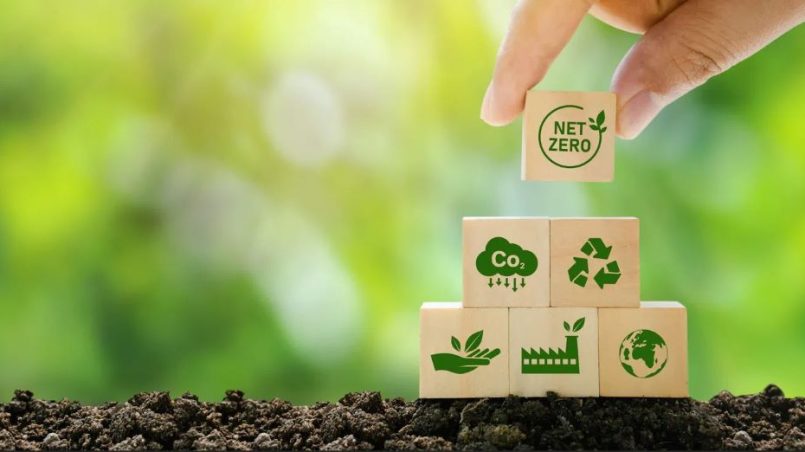Understanding Scrap Metal Recycling
Scrap metal recycling is both an art and a science, with centuries of history shaping the methods we use today. At its core, this process is about transforming yesterday’s discarded items into tomorrow’s raw materials, thereby reducing the need to mine or refine new resources. Scrap metals, such as aluminum, copper, steel, and brass, can be collected from homes, businesses, and demolition sites, where they often comprise a significant portion of the waste. By recycling these metals, people not only free up space but also conserve natural resources and contribute to a greener economy.
For those seeking a more local or focused solution, partnering with companies specializing in scrap metal NJ helps ensure these valuable materials are properly sorted, processed, and reintroduced into the manufacturing supply chain. Metal recycling is remarkably sustainable, as these materials do not degrade through repeated melting and repurposing. The collaborative effort between individuals, businesses, and recycling services keeps important metals circulating and lessens dependency on finite resources. Creative recycling initiatives and increased public awareness have led to a significant increase in the number of metals being saved from landfills every year, making this a crucial step for communities aiming to reduce their environmental impact.
Why Recycle Metal? Benefits and Data
Recycling metal goes far beyond simple environmental symbolism—it has quantifiable benefits that make a measurable difference. When industries use recycled metal, they bypass the extensive processes used to mine, transport, and refine virgin ores. For example, producing new aluminum from salvaged cans or siding requires just a fraction of the energy and results in about a 94% reduction in greenhouse gas emissions. Recycling steel uses around 60-74% less energy than producing it from iron ore. These energy savings not only lower pollution but also boost savings for manufacturers, helping to make the supply chain more resilient, especially during times of commodity shortages or price spikes.
Data shows that in the United States alone, over 80 million tons of iron and steel are recycled each year. Metals recycling also keeps millions of tons of copper, brass, and aluminum in circulation. According to the U.S. Environmental Protection Agency, ferrous metals—primarily iron and steel—constitute the largest share of recycled metals by weight, highlighting the substantial influence of this sector on waste minimization initiatives. These numbers reveal a broader truth: recycling metal not only protects the environment but also has significant economic value, supporting families, businesses, and entire communities. By emphasizing the reuse of these resources, everyone can participate in building a cleaner, more efficient future.
Common Sources of Scrap Metal
- Household appliances such as old washing machines, dryers, refrigerators, and microwaves often contain large amounts of steel and copper wiring.
- Vehicles—including cars, bicycles, and motorcycles—provide a wealth of recyclable material in the form of engines, wheels, radiators, and even body frames.
- Building materials from demolition or home renovations, such as copper pipes, steel beams, rain gutters, and aluminum siding, are all valuable sources of materials.
- Electronics, such as computers, printers, and phones, contain metal components (circuit boards, wires, and casings) that can be recovered.
- Everyday items, from tin cans and aluminum cookware to old lamps and tools, offer simple ways to start collecting valuable scraps at home.
Recognizing these sources empowers individuals to separate and save scrap materials consciously rather than letting them accumulate as waste. Many communities now include separate bins or specialty drop-off days for these very reasons. If everyone acted on these opportunities, the effect on landfill reduction and resource conservation would be dramatic.
Creative DIY Ideas for Recycling Scrap Metal
Although most recycled metal is utilized in industrial processing, a vibrant community of upcyclers transforms scrap into striking decorative items for homes and public spaces. For instance, retired garden tools—such as rakes, shovels, and hoes—can be repurposed into charming sculptures or eye-catching trellises for climbing plants. Artists and hobbyists often use old bike frames to construct shelves, clothing racks, or furniture that is both sturdy and interesting. Tin cans, once destined for the trash, can be transformed into lanterns, pen holders, or custom bird feeders with just a few simple modifications.
- Transform spools, pipes, and steel rods into planters or garden fences.
- Repurpose car parts or old machinery into benches, unique stools, or industrial-inspired tables.
- Fashion weatherproof outdoor art or garden signs from flat sheets or copper wiring.
- Utilize old hardware, such as hinges and fasteners, for intricate and decorative wall art.
These creative approaches not only add value and beauty to your surroundings but also often serve as conversation starters about environmental consciousness. Community workshops and maker spaces frequently share guides or host events to encourage more people to give scrap metal new life. In this way, recycling becomes not only a necessity but also a creative outlet.
How to Safely Handle and Prepare Metal for Recycling
Handling scrap metal requires care and common sense, as many items have sharp edges, are rusted, or contain remnants of hazardous substances such as oil or refrigerants. Using thick gloves and protective footwear is the first step toward safety. If you’re working with large appliances or machinery, consider enlisting help to avoid strains or injuries from heavy lifting.
- Separate all removable non-metal parts, including plastic, wood, or rubber gaskets. Many recyclers reward sorted loads with better pricing or faster service.
- Give everything a quick wipe or rinse to remove oil, grease, or grime. Clean scrap is more valuable and easier to process.
- Sort metals by type; for example, keep aluminum cans separate from copper wiring or steel bars.
- Flatten items that can be compressed, such as cans or sheets, to save space during transportation and streamline processing at the recycling center.
- Double-check for hazardous materials. Remove batteries, refrigerants, and electronic components according to local guidelines to prevent safety issues at the recycling facility.
These simple best practices make it easier for recycling centers to handle materials efficiently and safely, and could even net you more money for your scrap.
Community Recycling Initiatives and Programs
Collective action at the community level can magnify the benefits of metal recycling. Many municipalities offer curbside pickups or designate monthly drop-off events for bulky items and appliances. Scrap metal drives, often partnered with local charities or schools, provide residents with incentives, such as small cash rewards or tax deductions, for donating unwanted items. These efforts divert significant volumes of waste from landfills while fostering local pride and a sense of shared responsibility.
Joining neighborhood clean-up days or supporting local recycling programs are effective ways to increase awareness, boost recycling rates, and demonstrate the importance of environmental stewardship. Additionally, some programs offer educational workshops or public art projects that utilize reclaimed metal, transforming waste recovery into a community-building activity.
Scrap Metal Industry and Economic Impact
The recycling of scrap metal fuels an entire industry that represents a significant portion of the broader circular economy. In addition to helping the environment, the collection, processing, and sale of recycled metals sustain thousands of jobs domestically and millions more globally. According to recent economic reports, the U.S. metal recycling sector generates tens of billions of dollars in economic activity annually, encompassing roles ranging from collection and transportation to sorting and manufacturing.
Manufacturers rely heavily on recycled metals to keep their costs down and meet rising sustainability standards set by both government and eco-conscious consumers. As more regions prioritize emissions reduction and resource efficiency, the financial and social value of scrap metal recycling continues to rise. It’s a rare win-win: environmental gains are closely tied to strong economic outcomes, ensuring that recycling stays at the heart of green policy and business practice.
Frequently Asked Questions About Scrap Metal Recycling
- Can I recycle all types of metal? – Most metal can be recycled, but certain items, such as paint cans, propane tanks, or batteries with hazardous contents, may be restricted. Always check local guidelines and your recycling center’s list of accepted materials.
- Is scrap metal recycling profitable? – Yes, especially for non-ferrous metals like copper, brass, and aluminum. Larger quantities and sorted loads command better prices, so it pays to separate your metals before visiting a processor.
- What happens to recycled metals? – After collection, metals are cleaned and melted before being reformed into new raw materials for all kinds of industries, from automotive and technology to packaging and construction.



